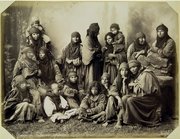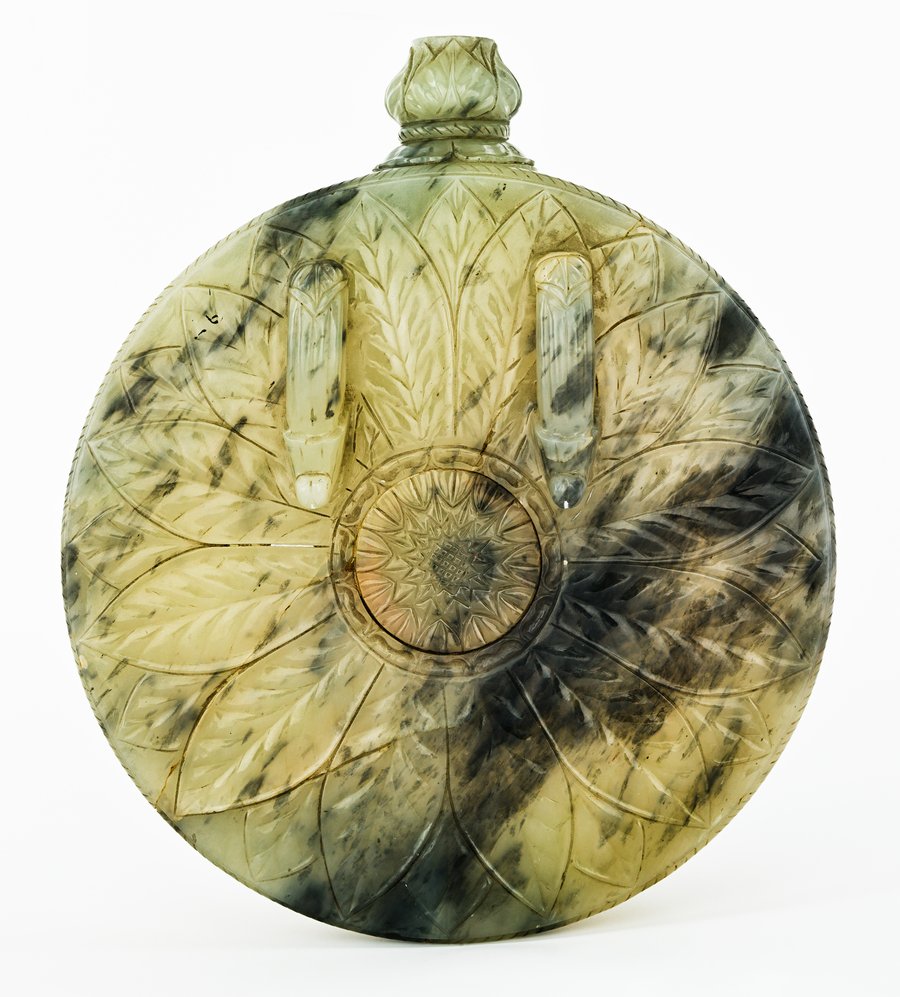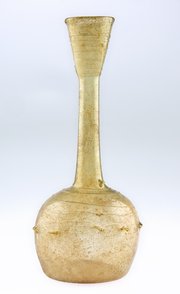
Mughal Priming Flask
Museum of Islamic Art
- Title:
- Mughal Priming Flask
- Production place:
- India
- Date:
- 1600 - 1699
- Period:
- Mughal
- Title:
- Mughal Priming Flask
- Production place:
- India
- Date:
- 1600 - 1699
- Period:
- Mughal
- Material:
- Jade
- Technique:
- Carving, Grinding, Polishing
- Dimensions:
- 5.8 cm
- Diameter:
- 13.0 cm
This exceptionally well-crafted primer is fashioned from a single piece of grey-green nephrite jade, and was most probably made in an imperial Mughal workshop sometime during the second half of the 11th century AH/17th century CE. Carved in a somewhat hemispherical shape, with a short, integral spout and large flattened base, the entire centre was masterfully hollowed out through a single, small round opening. After drilling and abrading to form the flask’s shape, the delicate floral patterning was then carved in low relief, with rounded petals, subtle veins and a fine crosshatch pattern in the central spray all detailed. On the base are two integrally curved, flattened loops, carved in low relief, through which straps could be inserted. However, this powder flask – if used - would have certainly cracked if knocked too vigorously against the matchlock of the gun it served to load. This object was therefore more splendid than practical, made to showcase the patience and skill of its craftsman. Mughals inherited an appreciation for carved jades from their forefathers, the Timurids - who referred to jade as “hajar al-ghalba (stone of victory)” - and sourced the finest jade from the region of Khotan, in Turkestan (Xinjiang). This jade primer probably derives from a Chinese prototype –reminiscent in form to that of a turtle – and would have originally had a gold stopper, now lost.



